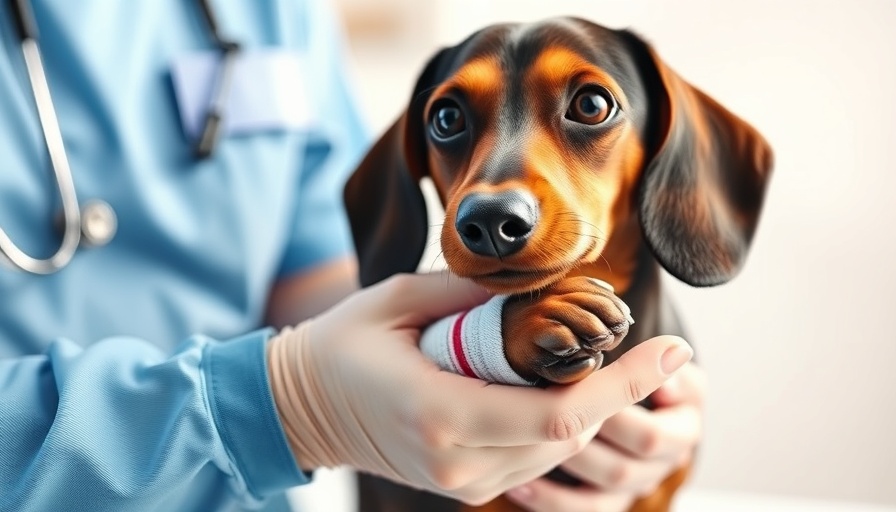
Identifying Your Dog’s Sprained Leg: Key Signs to Watch For
If you are a devoted pet owner, noticing your furry friend limping or yelping in pain can be distressing. Just like people, dogs can sprain their legs, often leading to moments of confusion and concern for their caregivers. Common indications include evident limping, yelping when touched, or difficulty moving. As important as it is to recognize these signs, it's equally crucial to not panic. Understanding how to respond may lead to swifter recovery for your four-legged companion!
The Distinction: Sprains vs. Strains in Dogs
Many pet parents tend to use the terms 'sprains' and 'strains' interchangeably. However, it’s important to differentiate between the two. A sprain occurs when a ligament, which connects bones together, is stretched or twisted. Conversely, a strain involves the muscles or tendons connected to the bones being pulled or overstretched. While both injuries can result in pain and lameness, sprains often require more attentive care as they may lead to more severe complications if not treated appropriately.
Why Do Sprains and Strains Occur?
Active dogs, especially those that love to run, jump, and explore, are more likely to sprain or strain a leg. It’s important to look out for activities that could lead to an injury, such as jumping from heights, making sharp turns, or simply slipping on wet surfaces. Keeping your dog at a healthy weight can also help prevent these injuries, as excess weight puts more strain on their joints.
The Recommended Course of Action
If you suspect your dog has a sprained leg, the first step is to contact a veterinarian for an accurate diagnosis. Taking immediate action can make all the difference. Often, sprains will require a regimen of rest, ice application, and possibly anti-inflammatory medications. However, in severe cases, such as a torn cranial cruciate ligament (CCL), surgical intervention may be necessary.
Preventing Sprains: Practical Tips for Pet Owners
Prevention is always the best medicine. Regular exercise tailored to your dog's energy level is essential, but be mindful of their limits to avoid over-straining their joints. Incorporating low-impact activities, using proper leashes during walks, and keeping your dog’s weight in check will go a long way in preventing sprains.
A Caring Approach: How to Comfort Your Dog
Lastly, empathy goes a long way in the recovery process. Your dog may feel emotional stress alongside physical pain. Providing a calm environment, wrapping them in a blanket, or simply giving them your presence can help ease their discomfort. Regular vet check-ins during recovery also help ensure they heal correctly.
Understanding how to care for your beloved pet through a sprained leg can make the process less daunting and more manageable. Be observant, proactive, and loving. Your dog will appreciate your attention!
 Add Row
Add Row  Add
Add 




 Add Row
Add Row  Add
Add 

Write A Comment